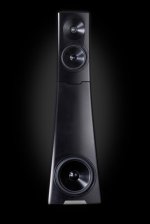with my seating distance 2.5m then i should not worry rite, both woofer and midrange should already blend nicely
notes : i don't do the trigonometry calculation yet
notes : i don't do the trigonometry calculation yet
How would this be possible in my scenario?
I have a 22” Radial Horn and a separate enclosure with an 18” Driver for Midbass in a two way system.
No matter the way I do the math, the 1/4 wavelength issue means I must set the crossover point lower than the horn will load.
Isn’t this more for say a bookshelf speaker with a 5” driver and 1” tweeter?
I have a 22” Radial Horn and a separate enclosure with an 18” Driver for Midbass in a two way system.
No matter the way I do the math, the 1/4 wavelength issue means I must set the crossover point lower than the horn will load.
Isn’t this more for say a bookshelf speaker with a 5” driver and 1” tweeter?
1/4 wavelength separation ensures that even at 90˚ off axis (the worst case example), the two drivers will still sum to an amplitude at -3dB relative to the on-axis response, which is still acceptable.
By the time you get to 1/2 wavelength driver separation, there would be a null created 90˚ off axis (assuming both drivers have the same off-axis response), with varying degrees of attenuation between 0˚ and 90˚ from the axis. This isn't likely to be a serious or even noticeable issue for most situations but it is advisable to avoid such design flaws if possible.
Using a 1 wavelength separation or more is asking for trouble as the nulls and attenuation quickly become an issue within 45˚ of the axis. This can degrade the direct sound quality as well as the reflected sound. See diagram for a visualization of nulls and amplitude variation:
Isn’t this more for say a bookshelf speaker with a 5” driver and 1” tweeter?
No.
dave
The midTweeter has to be heroic to achieve a quarter wavelength centre-to-centre. Or clever cabinetry.
What is the lowest the horn can go?
dave
What is the lowest the horn can go?
dave
I have the best response using REW at 388hz. It’s an Oris 250The midTweeter has to be heroic to achieve a quarter wavelength centre-to-centre. Or clever cabinetry.
What is the lowest the horn can go?
dave
388hz
About 9”.
Depending on the shape of the horn, and the driver basket, i can imagine 12-15” (guess) centre-to-centre.
It would be easier to achieve the goal with 2x15” or even better 4x12”. With even numbers you can load them push-push and take advantag eof active force cancelation.
dave
I’m struggling to understand this concept when you move to larger drivers
its all related to wavelength and wavelengths get longer at lower frequencies.
dave
If you are prepared to cross it this low then you may get 1/4 wavelength. I wouldn't want to use it this low and would be expecting to cross it without 1/4 wavelength spacing.I believe 300hz is pushing its limits
This is not a radial horn, but is axisymmetric. I cannot find a description of the flare.I have a 22” Radial Horn
Polar measurements will tell you when this is at 90 degrees, which is a region where it becomes useful to cross.
Last edited:
- Home
- Loudspeakers
- Multi-Way
- How much does Center-to-Center distance matter
